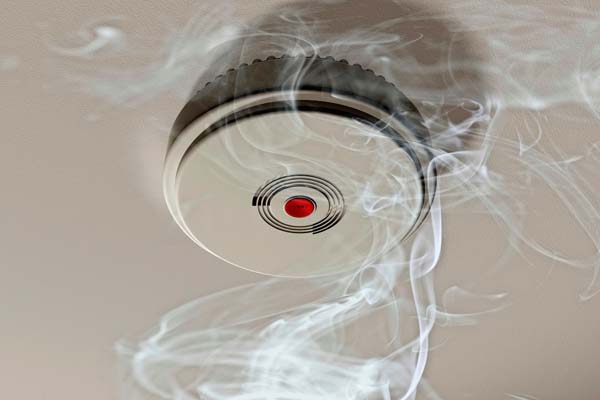
Photoelectric smoke detector is an intelligent type addressable detector which can be programmed from the control panel. The detector's unique optical sensing chamber is engineered to sense smoke produced by a wide range of combustion sources.
The detector is used in addressable fire alarm system can be located in control rooms, office areas, cable galleries, etc., provides the exact location of the fire in an area.
Heat detector is an intelligent type Rate of rise addressable detector which is used to sense the heat developed in the located area. The thermal detectors use an innovative thermistor sensing circuit to produce rate-of-rise thermal detection.
The detector is used in addressable fire alarm system can be located in battery room, UPS & pantry etc., provides the exact location of the fire in an area.
The probe type heat detector is an rate-anticipation heat detectors operate within a controlled range of two to three degrees of their set points, regardless of the speed or rate of temperature rise. The heat detectors respond and activate the fire alarm immediately whenever the ambient temperature reaches the preset temperature setting.
The probe type heat detector is used in the generator areas as a detection system which is connected with an interfacing module to transmit the signal to the Fire Alarm Panel.
The Beam detectors are intelligent addressable projected beam smoke detectors for protecting open areas with high and slope ceilings and wide open areas where spot type smoke detectors are difficult to install and maintain. When smoke enters the area between the unit and a reflector it causes a reduction in the signal strength. When the smoke level reaches the predetermined threshold, an alarm is activated. The application of beam detectors are atriums, cathedral ceilings, aircraft hangars, warehouses, sporting arenas, concert halls, etc.
The digital line heat detector is designed to provide early detection of the fire conditions and overheating in circumstances where other forms of detection would not be viable, either due to inability to sustain the environmental requirements.
Digital sensor consists of a two-core cable in which the conductors are separated by a heat sensitive insolent. When a specified temperature is reached, the cable insulation breaks down and an alarm is indicated. The digital sensor is used in cable galleries, cable tunnels, etc.
The Manual Call point is a device which has to be operated manually when the fire has been detected. During fire, the Manual Call Point's "BREAK GLASS" has to be broken to initiate the alarm on the panel and the panel will do all the alarm, annunciation and controls. To reset the system for normal operation, "BREAK GLASS" of the Manual Call Point has to be replaced and the panel has to be reset through "Reset" Push Button.
Purpose of this manual call points is to inform the panel about the fire condition when the fire is detected manually. Just by pressing the manual call point, the signal can be transferred to the panel. All the other operations of the panel shall be same as of automatic operation.
The hooter is nothing but a sounder which is an output device which is used to give alarm after the fire has been detected. It is used in all control rooms and all exit areas, corridors, etc. The hooter is connected with the fire alarm panel through an interfacing addressable device named control module.
Monitor modules are nothing but input devices which are available for intelligent control panels to suit a variety of applications. Monitor modules are used to supervise a circuit of dry-contact input devices, such as conventional heat detectors and pull stations, etc.
The addressable control module provides control panels a circuit for notification appliances such as horns, strobes, speakers, etc., or to actuate the solenoid coil.
The Addressable relay module provides the system with a dry-contact output for activating a variety of auxiliary devices, such as fans, dampers, control equipment, etc.
The fault isolator modules should be spaced between groups of sensors in a loop to protect the rest of the loop. Use of isolator module is to overcome the short circuit problems within a section of a loop so that other sections can continue to operate normally. The module supports a maximum of 25 devices in-between isolators.
The response indicator is used to repeat the fire signal of a detector which is placed above false ceiling and below false floor. The red LED glows when the corresponding detector gives fire signal.